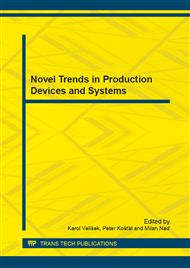p.339
p.345
p.351
p.357
p.363
p.369
p.375
p.381
p.387
Computational Analysis of Contact Stress Distribution in the Case of Mutual Slewing of Roller Bearing Rings
Abstract:
The paper deals with computational analysis of contact stress distribution of rolling elements of roller bearing with regards to the effect of slewing bearing ring at intervals from 0 to 8 and load rate variety at intervals from 25% to 100% of its basic static radial load capacity. The main goal is to present changes in contact ellipse and changes in contact stress for the logarithmic profile of rolling element. Analyzed effect is expressed by functional dependence which can be used in technical application.
Info:
Periodical:
Pages:
363-368
Citation:
Online since:
January 2014
Authors:
Price:
Сopyright:
© 2014 Trans Tech Publications Ltd. All Rights Reserved
Share:
Citation:


